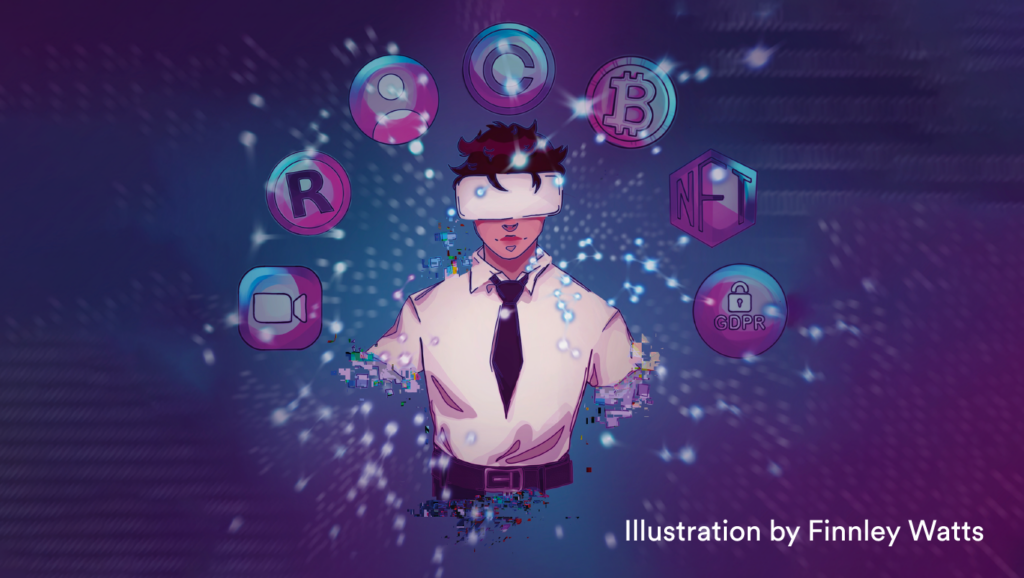Jurisdiction and torts in the metaverse
18.10.2022

If somebody attends a pop concert in the metaverse from their home in the UK, where the metaverse is hosted on a South Korean server, the artist sings from her home in the US, and the tickets are sold by a concert promoter based in Canada, it is difficult to ascertain where the concert is taking place and which court(s) might have jurisdiction over claims for losses arising in connection with that concert.
In the ninth article of our series we explore how courts might grapple with this question of identifying an appropriate jurisdiction for litigation arising from the metaverse.
Cross-border litigation
When somebody believes that their rights have been infringed, and they want to enforce those rights or seek some sort of remedy to compensate them for their losses or injuries, they look to the courts and tribunals. Where there is no cross-border element to the claim, the claimant’s local courts and tribunals would ordinarily be expected to assume jurisdiction over the claim. Where there is a cross-border element (for example, the defendant to the claim resides or carries on business in another country), matters can get more complicated. Countries typically have rules in place to assist their courts to determine whether, and on what basis, they may exercise jurisdiction over a dispute. These rules tend to be informed by principles found in the Charter of the United Nations such as sovereign equality, non-intervention and territorial integrity. In addition, some countries are parties to international conventions regarding jurisdiction over cross-border disputes and, in some cases, the recognition and enforcement of judgments reached in those disputes. Collaboration in this area continues: it was as recent as 2019 that the Hague Judgments Convention was concluded.
Matters get trickier, however, when the events or conduct complained of takes place outside the physical world. The prevalence of the internet, for example, led countries to adapt their legal frameworks and create new laws to cater to disputes arising from its use. It is uncertain how these laws will apply to the avatars that inhabit the metaverse and the trade in digital assets, such as non-fungible tokens (“NFTs”), which occurs within it. The English courts, for example, have recently shown themselves prepared to exercise jurisdiction over a claim regarding NFTs held in a marketplace operated by an American company, on the basis that it is arguable that NFTs are property under English law. The court found that the location of the NFTs is the place where their owner is domiciled. Similarly, we have seen the UK tax authorities seize NFTs in connection with tax fraud. This is a fast developing area of law and there is real scope for international jurisdictional conflicts.
Torts in the metaverse
The choice of jurisdiction is to some extent dependent on the nature of the dispute. In the context of tortious wrongdoing jurisdictional rules typically require some degree of nexus between the wrongdoing and the country in question. Under the Recast Brussels Regulation that applies in the European Union, for example, jurisdiction over tortious claims is determined by reference to the place where the damage occurred or the place of the wrongdoing which gave rise to that damage. In England & Wales, similarly, the courts may exercise jurisdiction provided that the damage is sustained in the jurisdiction, or the damage results from an act committed there.
It is questionable how these principles would apply to tortious wrongdoing in the metaverse. However, given the potential uses of the metaverse for socialising, work, gaming, shopping, trade and entertainment, it is likely that torts will be committed in this virtual space. For example:
- A dishonest trader selling goods in the metaverse may commit the tort of passing off if he falsely represents that the goods he sells are the goods of a (usually well known) third party. The damage that is done here is to the third party’s right to the goodwill in their business, and the claimant is that third party.
- The tort of misrepresentation (also known as negligent misstatement or the tort of deceit in other countries), where false statements are relied upon causing a loss, could also become common. For example, a company may purchase advertising “space” at a pop concert held in the metaverse in reliance on false statements made by the concert promoter about the visibility of that advertising space.
- The tort of negligence may also be relevant if the courts recognise any new situations where a duty of care might arise in connection with the conduct of avatars in the metaverse. The providers of metaverses might themselves be subject to statutory duties of care, at least in Britain if the Online Safety Bill is enacted into law, if not as a result of regulation by other countries as well.
In each of the areas above, the courts will need to determine the place of wrongdoing and identify the wrongdoer. Various considerations will apply. For example, the court may have to consider whether an avatar could ever have a separate legal personality ascribed to it or be treated as an independent tortfeasor. It seems more likely at this stage that an avatar’s statements and conduct would be attributed to the person controlling it, but if an avatar ever exercised independent decision-making (i.e. it had artificial intelligence) the question could become more complicated.
It will also be interesting to see how courts determine where the “damage” caused by a tort takes place. It will likely depend on the facts of the case. For example, if the third party trader in the passing off scenario set out above were also a real world trader, the courts would need to determine whether the damage occurred in the metaverse, in the real world or both. Meanwhile, if the third party operated only in the metaverse the courts would need to examine whether the damage occurred only in the metaverse or in the place of its (human) ultimate beneficial owner. The question would be further complicated if the company were a product of AI. Equally, if the place of both the wrongdoing and the damage were the metaverse, could existing concepts of jurisdiction be stretched so as to accommodate this tort?
Lastly, there is the intriguing possibility of the creation of a single set of courts or tribunals exclusively to hear claims arising out of conduct taking place in the metaverse. As part of this system, countries might each agree to cede jurisdiction over such matters – or certain categories of them – to the “metaverse courts”. Such a system might help to manage claims where there are competing assertions of jurisdiction between the courts of different countries. The metaverse courts might themselves operate within the metaverse. There is, as yet, no serious public debate about such an approach, but as the metaverse takes shape in the years to come it might form part of the discussion.
Still have questions? Be sure to read our metaverse articles below:
- Welcome to the metaverse: part one (definitions for a digital world)
- Welcome to the metaverse: part two (the metaverse’s past, present and future)
- NFTs in the metaverse
- Brand protection in the metaverse
- Advertising in the metaverse
- Copyright in the metaverse
- Taxation in the metaverse
- Competition/antitrust in the metaverse
- Reputation in the metaverse
- Online harms and safety in the metaverse
- Data protection in the metaverse
- Working in the metaverse – what employers need to know
Bristows Tech Summit 2022What should innovative technology companies be looking out for over the next year? Join us on Thursday 24 November for an afternoon of insightful discussions, as our team of leading experts tackle the most important legal and commercial issues that face the technology industry. Register your interest here. |

Ben Coleman
Author
